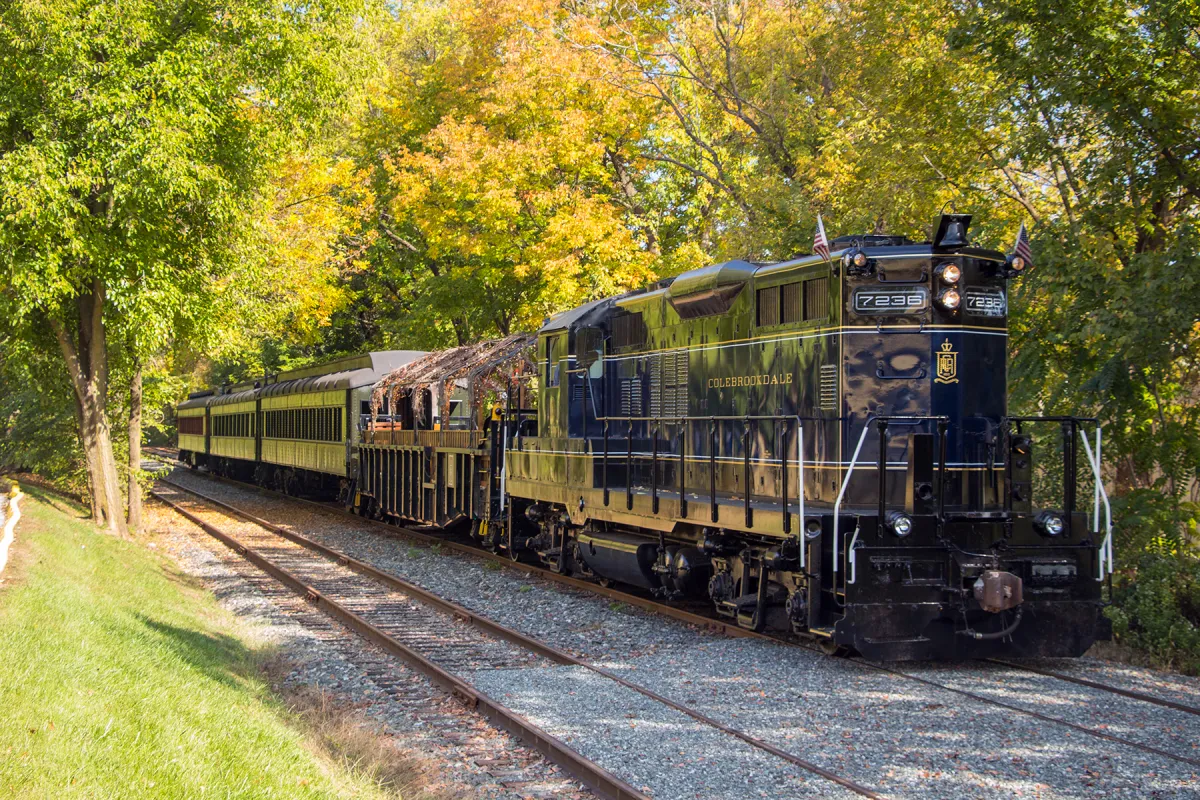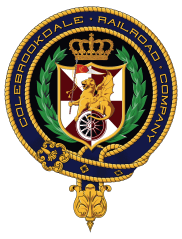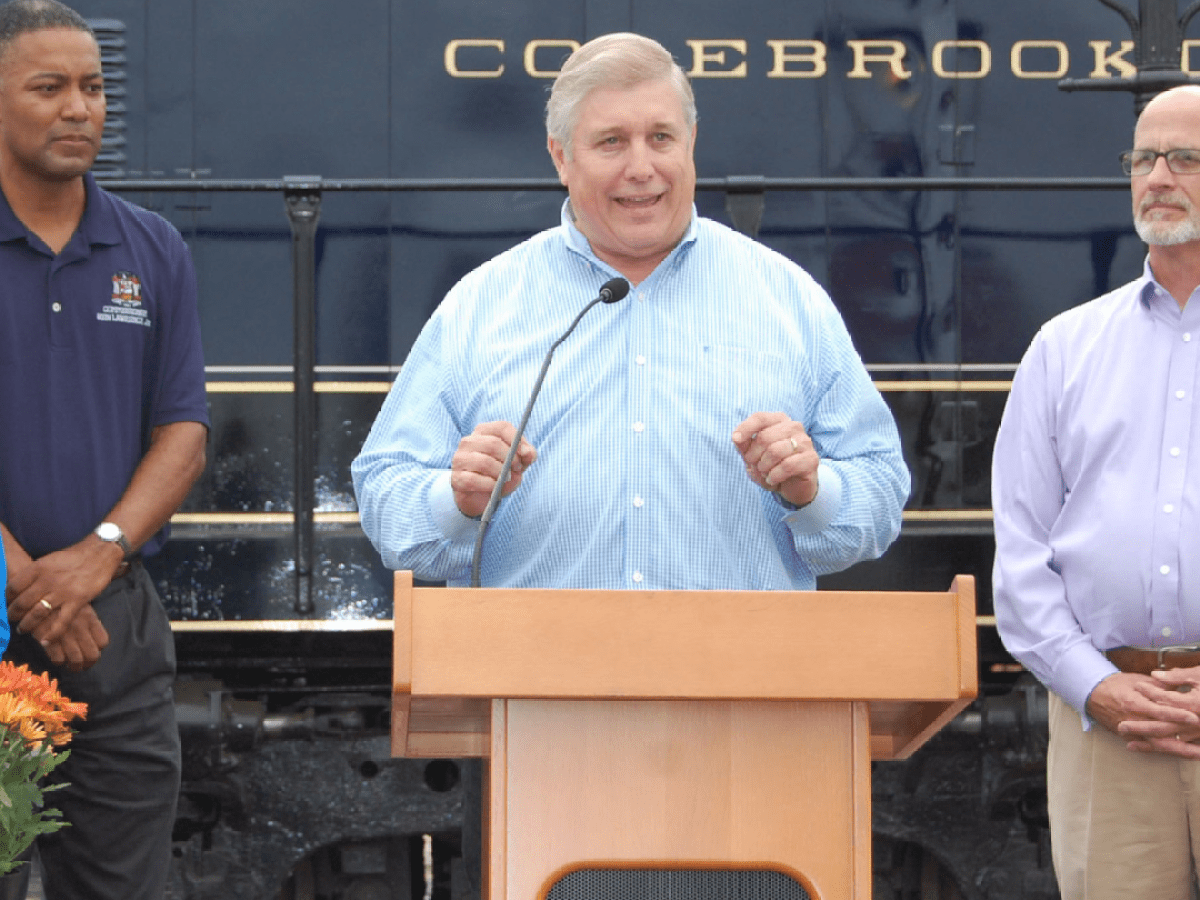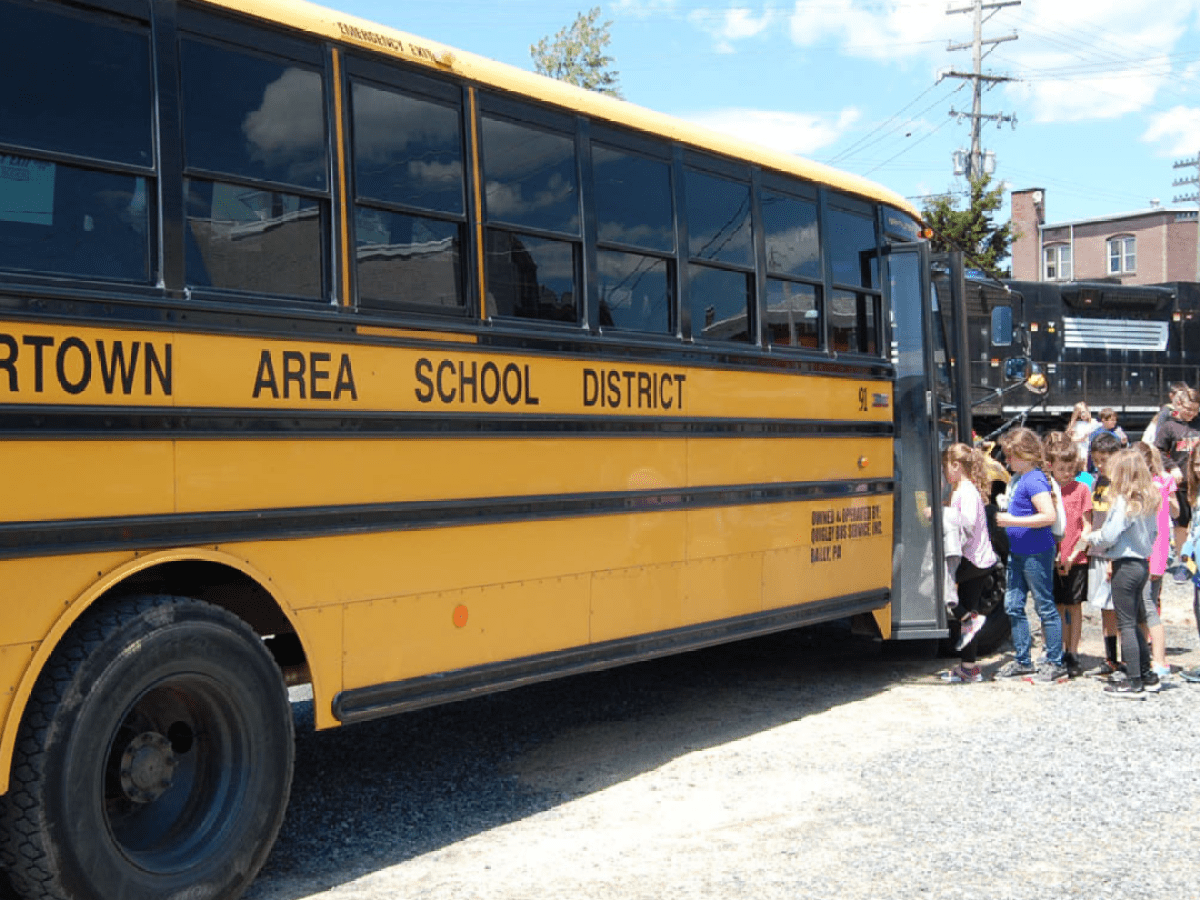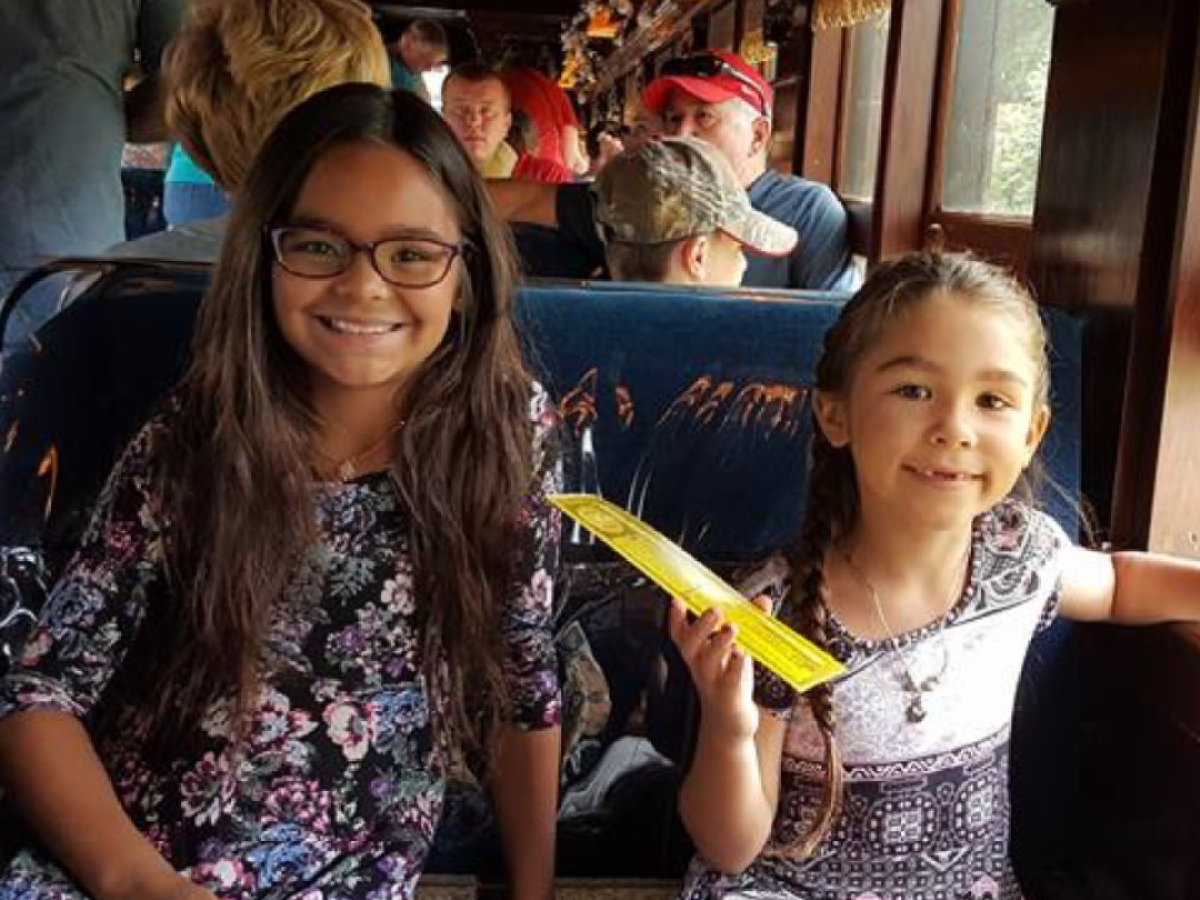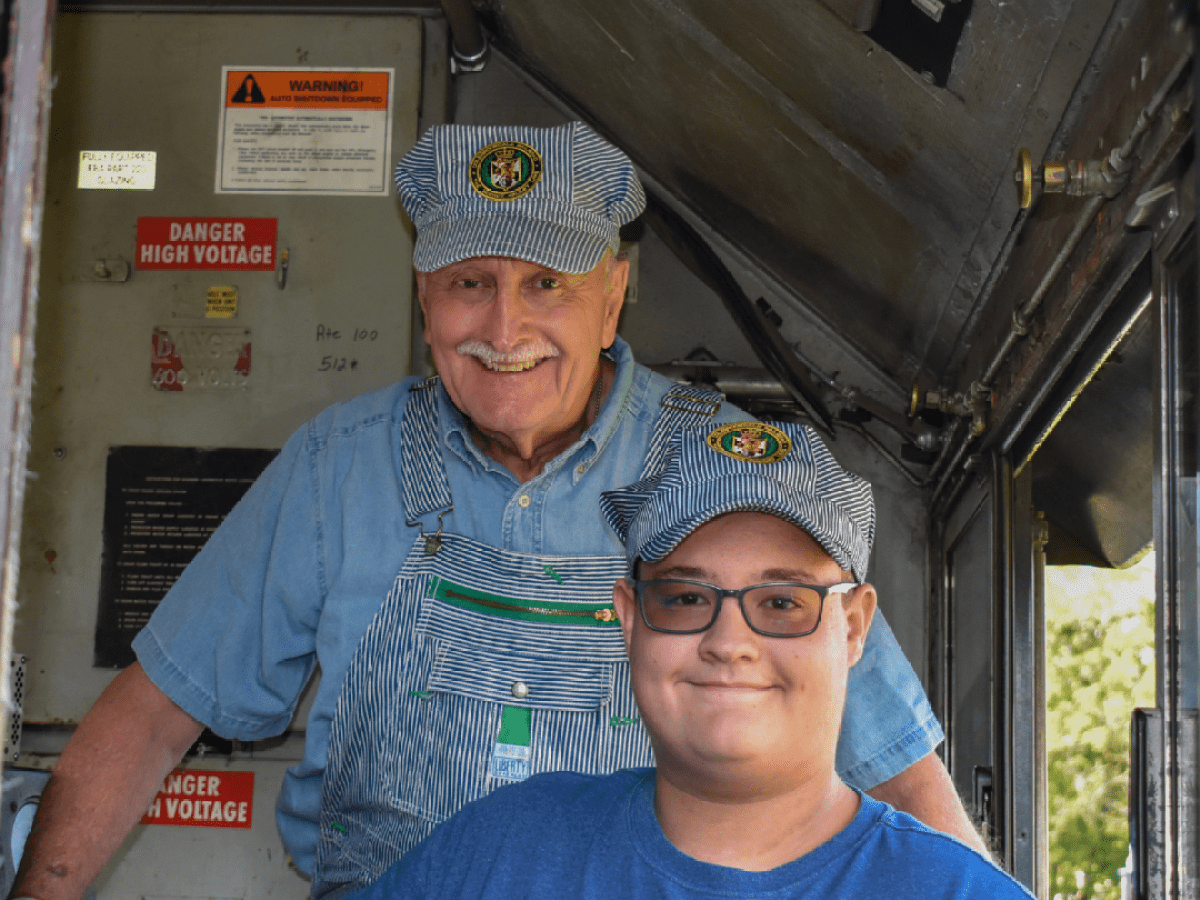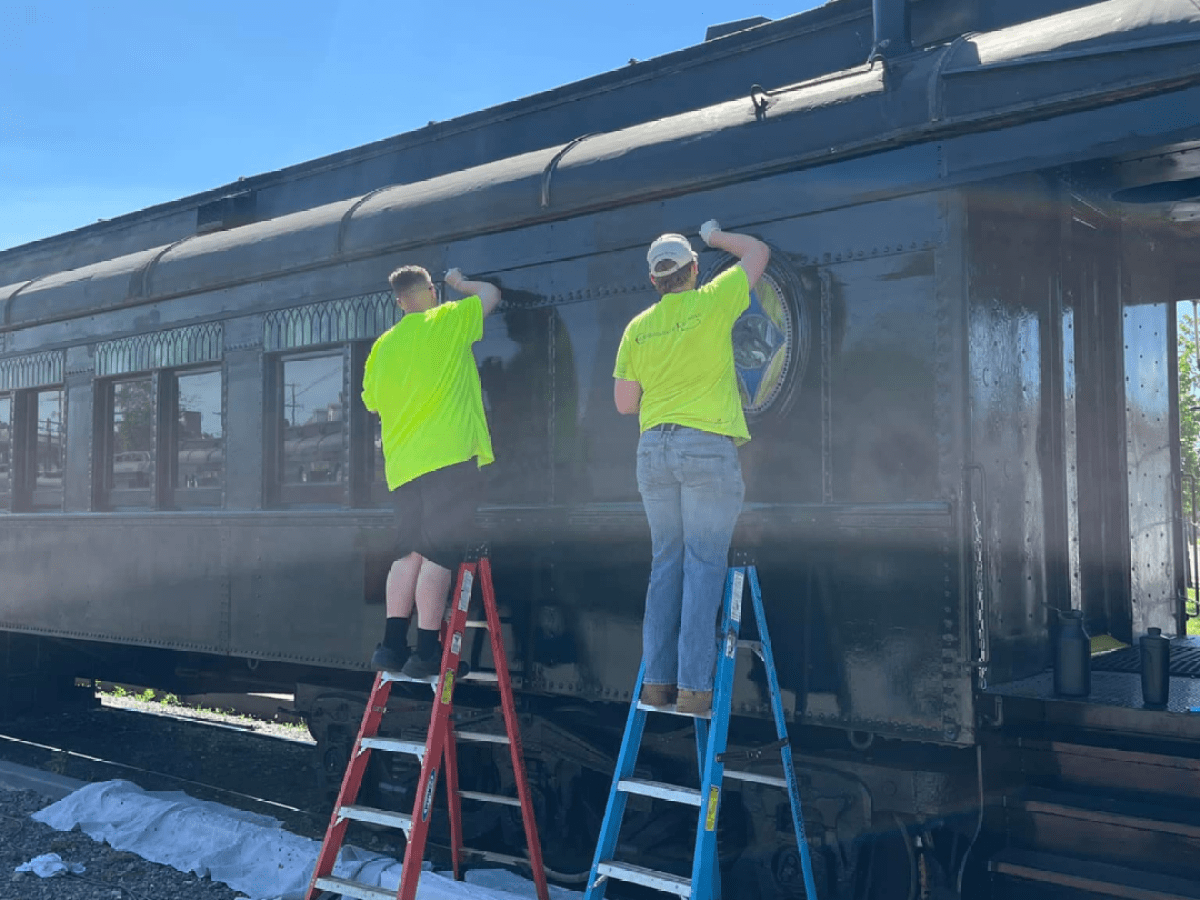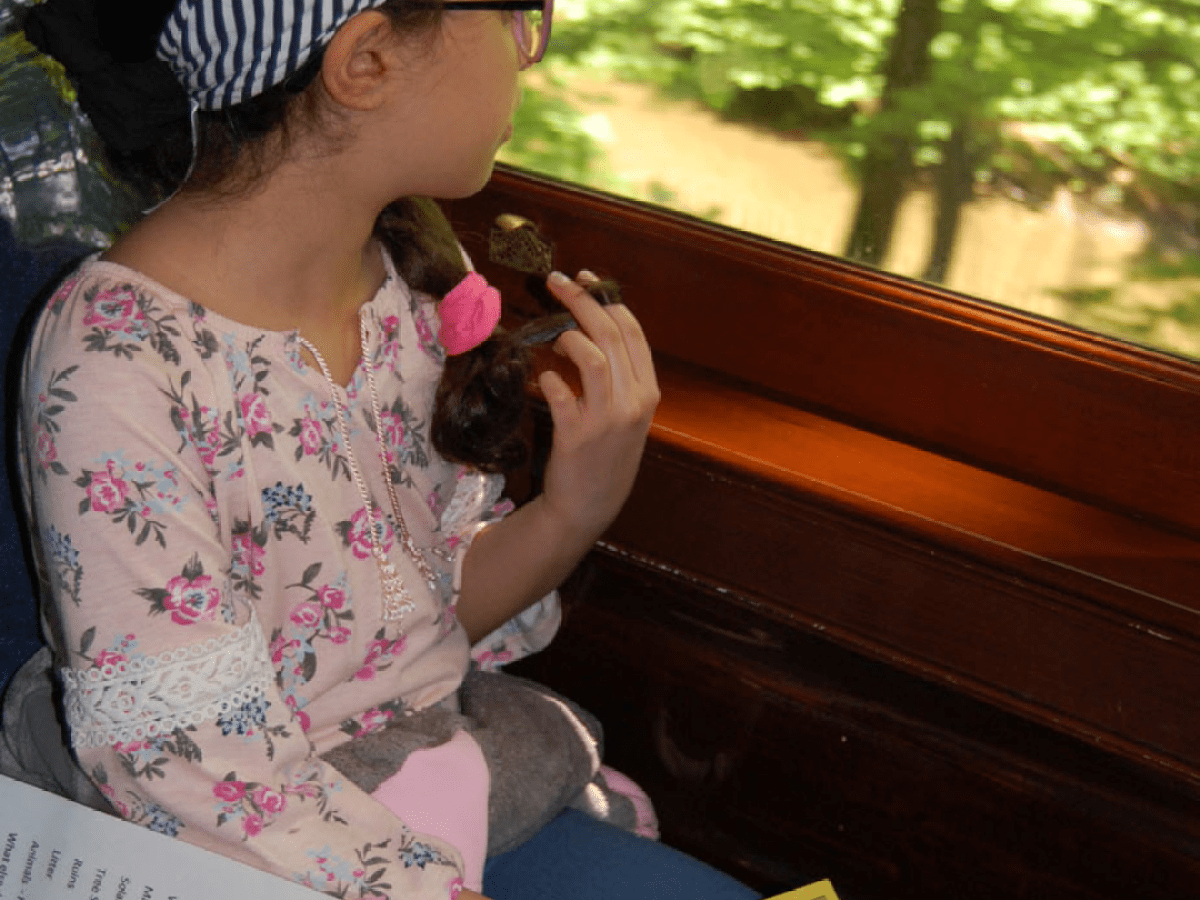Learn About the Colebrookdale Railroad
Colebrookdale Railroad is more than just a train. Our trains are the metaphorical and literal vehicle used to carry out impactful transformations in the community we serve. By preserving the past, we are revitalizing communities, creating jobs, and inspiring future generations through immersive experiences, educational programming, and economic revitalization in Berks and Montgomery County.
Our Story
In response to the decline of several legacy industries, the Berks County Community Foundation launched a citizen-led, professionally guided Visioning & Strategic Planning process to reimagine our region’s economic future. Developed with input from local businesses, regional planners, political leaders, and the Urban Partners economic planning firm, the study identified tourism and recreation as the most promising path toward a resilient and sustainable economy. From that vision, the Colebrookdale Railroad Preservation Trust was born.
Founded in 2012, the Trust set out to restore and reimagine the historic Secret Valley Line—an 1860s-era railroad that once fueled America’s Industrial Revolution. Today, that vision has become reality. In partnership with Berks and Montgomery Counties, their Redevelopment Authorities, several municipalities, and a dedicated network of donors, foundations, and volunteers, we’ve transformed a forgotten Civil War-era corridor into a thriving heritage attraction. The railroad now welcomes more than 30,000 passengers annually and, according to an independent economic study, generates approximately $13 million in economic impact each year. Our work has created hundreds of jobs, with more than 80 long-term roles sustained directly in our community.
Every year, we donate thousands of train tickets to ensure no one is left behind—making magical experiences accessible to all. Our trains serve as a venue for local nonprofits and organizations to raise vital funds without the burden of high event costs. From job creation to education to community development, we’re proud to be part of something bigger than ourselves.
-
The Colebrookdale Railroad Preservation Trust preserves and interprets the historic, cultural, and natural heritage of the Middle Schuylkill region, the birthplace of the American iron industry. Through job creation, skills-building, education, and recreation, we empower communities and connect people with their past.
-
To create the premier early 20th-century-style tourist railroad experience, offering immersive, educational, and inclusive programming that supports local economic growth and historic preservation.
-
The Colebrookdale is a core corridor within the only region in the United States where visitors can explore iron industry vestiges from its 18th century infancy, observe 19th century technological innovations and industrial expansion, and learn about 20th century international steel markets – all within a radius of 35 miles from the Pottstown and Boyertown stations. Unspoiled by time, the Colebrookdale’s Secret Valley looks much the same today as it would to the iron-willed pioneers who first ventured along its cold, rushing creeks three centuries ago. Find out more about the iron history of the Schuylkill Valley here.
- The Colebrookdale Railroad corridor cuts through the heart of the Schuylkill Valley’s earliest iron industries and the sites of the first iron works in Pennsylvania, the first blast furnace and the first refinery forge. The majority of these works belonged to or were controlled by the Potts family of Pottstown.
- In Pottstown, we begin our journey near Pottsgrove Forge. Later converted to a merchant grist mill, Pottsgrove Forge, located on the millrace from Manatawny Creek, was built by John Potts in 1752 and refined iron from Colebrook Dale and Warwick furnaces. It was located west of the Hanover Street Bridge.
- Heading west out of Pottstown, the railroad leaves the mainline of the Philadelphia and Reading Railroad and travels north along the millrace of the old Potts family’s upper gristmill. The gristmill, then owned by the Gable Brothers, burned down on 3 December 1877, apparently from a spark from the Colebrookdale Railroad’s locomotive.
- A short distance from the old mill, the railroad passes John Potts’s 1752/1753 mansion, Pottsgrove Manor. Pottsgrove Manor is near the site of the construction of the world’s first iron railroad bridge. It was from Pottsgrove Manor that Potts ran his iron empire which included large tracts of land totally 995 acres, forges, furnaces, brew houses, sawmills, and gristmills. The manor house underwent a number of alterations as it passed through a succession of owners. During much of the railroad’s existence, it was used as a hotel and boardinghouse. It eventually fell into disrepair in the second quarter of the twentieth century. Pottsgrove Manor was restored more accurately to its original appearance in the late 1980s and reopened in 1991. It is currently operated by Montgomery County’s Department of Parks and Heritage Services. In 1761, John Potts laid out a town around the forge, establishing what would become Pottstown, Pennsylvania. The Borough of Pottstown was incorporated in 1815. In the ensuing century, Pottstown became known as “Boomtown USA” thanks to the iron industry and the coming of the railroad. Area metal industry involved in significant projects including Panama Canal and, later, the Golden Gate Bridge.
- Continuing north-west on the Manatawny Creek, the train passes Glasgow Forge, also called McCall’s Forge, founded in 1752 by Samuel McCall. McCall dammed the Manatawny Creek and used water power to lift the forge’s trip hammer. This refinery forge was originally manned by African Slaves and was later owned by the Potts and Hockley families. The old Iron master’s mansion still stands.
- Next, the line passes Poole Forge, founded in 1716 by James Lewis & Co. It was built to refine Colebrook Dale Furnace’s pig iron. Also built on the Manatawny, it was located just over the line in Berks County. It was eventually owned by the Potts family. It closed in 1765 and the forge tract was broken up and sold to farmers.
- Continuing northwest, the line passes Pine Forge. Originally the site of Thomas Rutter’s Bloomery, the first ironworks in Pennsylvania, it was converted to a refinery forge in 1720 and renamed Rutter’s Forge. It was obtained by the Potts family who renamed it Pine Forge in 1745. It refined iron from Mt. Pleasant and Colebrook Dale Furnace and was in existence for well over 100 years.
- At Pine Forge, the line follows the Ironstone Creek north and passes near the old Colebrook Dale Furnace site at Boyertown. Colebrook Dale was named after Abraham Darby’s Coalbrook Dale Furnace in Shropshire, England, and was built by Thomas Rutter in 1720. It is Pennsylvania’s first cold blast furnace. It closed in 1765, but with Rutter’s Forge, it is credited with starting the Pennsylvania iron industry.
- Pine Iron Works, also located in Pine Forge, was an early producer of steel plate used in steam locomotive boilers.
- The Colebrookdale Iron Company, located just south of Boyertown on Farmington Avenue, was founded in 1835 and reorganized in 1888. Joseph Bailey, founder of the Colebrookdale Iron Company, was the primary proponent of the Colebrookdale Railroad.
- Union Manufacturing in Boyertown was a prolific producer of iron stoves used in railroad cabooses.
- Finally, the line was extended to Barto, the site of Thomas Potts’s 1738 Mt. Pleasant Furnace. The furnace was run by the Potts family and sent its iron to Spring Forge in Earl Township and to Pine Forge. This was the third charcoal blast furnace in Pennsylvania. Thomas Potts rented it out in 1745 to Thomas Mayburry, who owned Green Lane Forge in Marlborough Township. The furnace had several forges built near it with the same name and it closed around 1800.
This history provided to the Colebrookdale Railroad Preservation Trust by Dan Graham.
The Secret Valley Natural, Recreation, and Heritage Area
The Colebrookdale Railroad connects visitors to the history, beauty, geology, and nature of one of the most historic, beautiful, geologically-unique, and naturally-unspoiled valleys in the United States—the Secret Valley. This magical land is part of the Secret Valley Natural, Recreation, and Heritage Area in development by the Colebrookdale Railroad Preservation Trust.
While the Civil War-era railroad will form the backbone of the Heritage Area, visitors will eventually be able to travel between Pottstown and Boyertown by hiking, biking, kayaking, canoeing, and rafting. A trail currently in planning stages, as well as the Manatawny and Ironstone Creeks, will augment the railroad in offering access for fishing, camping, bird watching, nature tours, etc. Additionally, the Trust is working to plan access to the numerous public parks and other attractions—including one of Pennsylvania’s premier breweries—located along the right-of-way.
History, Industry, and Nature Like No Other
The Colebrookdale’s quiet, sheltered course along the Manatawny and Ironstone Creeks connects the oldest iron-making sites in North America, starting at Pottsgrove Manor in Pottstown—home of the ironmaster founder—and the forges, foundries, and furnaces of what was the first iron “Silicon Valley” in the new world.
The lands along the railroad were once occupied by two Indian tribes (“Manatawny” means “place where we drink alcohol”). The tribes greeted William Penn near the railroad’s stone arch bridge in Pine Forge and a home later used by General Washington on his regular visits to the area. Washington came to the Colebrookdale valley frequently to urge the iron masters to ramp up their production for the Continental Army.
Temple University sends its geology classes to the Colebrookdale each year to study the line’s deep rock cuts. The cuts caused labor strikes in the 1860s when the Civil War veterans who dug them—by hand—revolted at the enormity of the task. Today, however, they evidence both the ancient sea floor and the ancient mountaintop from the supercontinent Pangaea. The result of both forms of rock being so closely situated was to produce a magnetic iron ore. The fact it was magnetic made it easy to find, drawing early iron pioneers and, later, Thomas Edison. Edison rode the Colebrookdale each week for six years in search of a special ore along its tracks to be used in a device he was working to invent.
Today, the Secret Valley Natural, Recreation, and Heritage Area is home to a wide variety of flora and fauna. Eagles, red-tailed hawks, deer, turtles, fox, turkeys, geese, and ducks are frequent sights from the train.
Unspoiled by time, the Colebrookdale’s Secret Valley Natural, Recreation, and Heritage Area looks much the same today as it would to the iron-willed pioneers who first ventured along its cold, rushing creeks three centuries ago. We invite you to come experience it for yourself
"This is how you bring a town back from the brink."
Malerie Yolen-Cohen, Contributor, The Huffington Post, Oct 14, 2016

Teaching Trades, Empowering People
Our railroad serves as a career launch pad for individuals from all walks of life, including those on the autism spectrum, sensory spectrum, at-risk populations, and individuals for whom English is a second language. We offer real-world experience in skilled trades like railcar restoration, hospitality, operations, and business administration.
With guidance from life coaches, educators, and industry professionals, we meet individuals exactly where they are and build tailored experiences that support their growth. This isn’t just job training—it’s a path toward self-sufficiency. Through mentoring and immersive work opportunities, we help individuals build confidence, gain new skills, and break the cycle of poverty, one step at a time.
Hands-On Education That Brings Learning to Life
We ensure that every child—regardless of background—has access to meaningful, real-world learning that sparks curiosity, builds awareness, and inspires lifelong exploration. Our Department of Education-approved curriculum, Rails of Revolution: The American, Industrial, and Environmental Revolutions in the Secret Valley, provides hands-on educational programming to thousands of children each year free-of-charge thanks to our donors who receive tax credits through the Educational Improvement Tax Credit program.
Rails of Revolution integrates history, environmental conservation, and sustainability, giving students a deeper understanding of their world and their role in protecting it. Students learn about the Native Americans who first called this area home, and the industrial and cultural heritage of the colony and Commonwealth of Pennsylvania. Participants also learn about the region’s rich heritage of iron and steel pioneering, the amelioration of nature and man in the post-industrial age, and the dangers of over-consumption of our natural resources.
A team of educators intentionally designed our multidisciplinary approach by incorporating History, Science, and Nature with a connection to science, technology, engineering, arts and humanities, and mathematics. Students are immersed in STE(A)M topics in a unique, participatory, age-specific discovery-driven manner made possible only by the train.
Field trips, summer camps, and internship programs in partnership with a local community college introduce the Colebrookdale to students of a variety of ages. Our literacy trains welcome children to ride our train to our mid-route education site where they enjoy lunch and a reading by one of our educators. Each participant chooses a book to take home as their souvenir.
Students can enjoy the educational experience aboard the Colebrookdale’s restored Edwardian-era train or aboard our unique railbikes—people-powered rail vehicles.

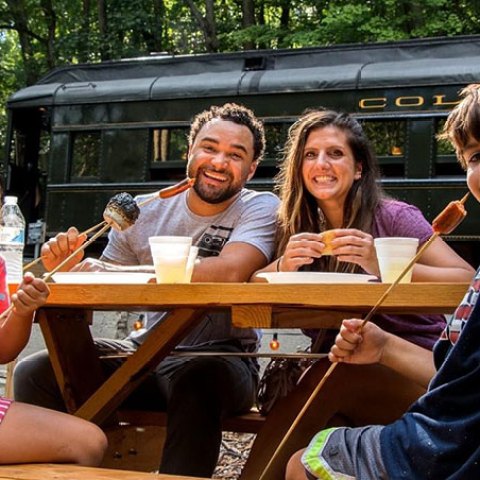
Building Stronger Communities
We drive more than trains—we drive economic development and community revitalization. Since our restoration began, we’ve generated over $0 million in regional economic impact and created hundreds of jobs, with 80+ sustained long-term roles in our community.
We also give generously to the community that supports us. Every year, we donate thousands of tickets to ensure no one is left behind, making magical train rides accessible for everyone. We provide our trains as a venue, helping local organizations raise vital funds without the burden of high event costs. From job creation to joyful experiences, we’re proud to be part of something bigger than ourselves.
In response to a community’s need assessment, we are currently engaged in a multi-year project to redevelop the areas where our trains connect to our communities’ downtowns. This includes the construction of a Festival Marketplace in Boyertown, and the Steel River Station in Pottstown. Boyertown’s Festival Marketplace will include Secret Valley Farmers Market, the Boyertown Regional Welcome Center, and the Colebrookdale Arts Center and cat café.
We are transforming communities.
The redevelopment of the historic central terminal area in the heart of Boyertown has been a critical component of the Colebrookdale Railroad community and economic development project since its inception. Learn more about how we are transforming communities below.
MAKE AN IMPACT
Donate today and help bring the railroad back to life!
